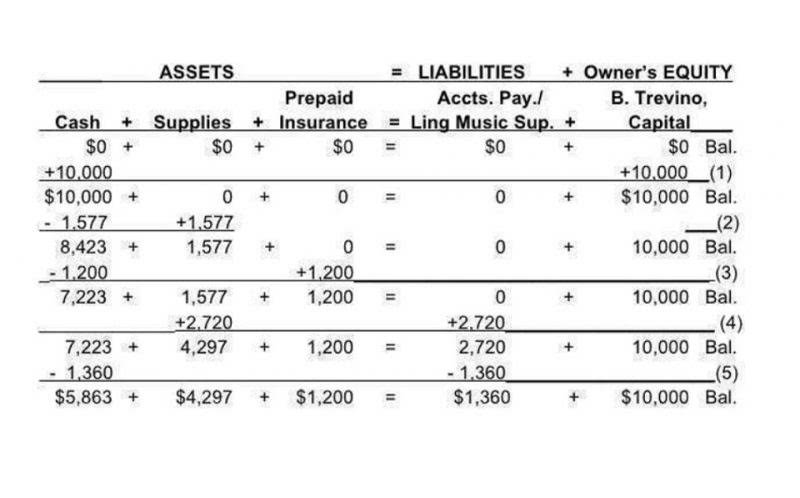
Learn how to Bookkeeping for Painters find and calculate retained earnings using a company’s financial statements. Retained earnings are affected by an increase or decrease in the net income and amount of dividends paid to the stockholders. Thus, any item that leads to an increase or decrease in the net income would impact the retained earnings balance. The retained earnings formula calculates the balance in the retained earnings account at the end of an accounting period.
The Retained Earnings Statement: Purpose and Components

Beyond this, retained earnings are also a useful figure for linking the income statement and balance sheet. The level of retained earnings can guide businesses in making important investment decisions. If retained earnings are low, it may be wiser to hold onto the funds and use them as a financial cushion in case of unforeseen expenses or cash flow issues rather than distributing them as dividends. However, if both the net profit and retained earnings are substantial, it may be time to consider investing in expanding the business with new equipment, facilities, or other growth opportunities.
DISCLAIMER FOR REPORT
- If the company had a market value of $2 million before the stock dividend declaration, it’s market value still is $2 million after the stock dividend is declared.
- From there, the company’s net income—the “bottom line” of the income statement—is added to the prior period balance.
- This is the retained earnings amount from the end of the previous financial period.
- The details are up to you, and you should use what you’ve learned here to make smart decisions regarding retained earnings and the future of your business.
- In this case, Company A paid out dividends worth $10,000, so we’ll subtract this amount from the total of beginning period retained earnings and net profit.
Though cash dividends are the most common payout, remember that stock dividends are another option. Unlike cash payments, stock dividends don’t immediately impact a company’s bottom line. To find retained earnings, you’ll need to use a formula to calculate the balance in the retained earnings account at the end of an accounting period.
Net income/net loss during an accounting period
As a result, any item, such as revenue, COGS, administrative expenses, etc that impact the Net Profit figure, can impact the retained earnings amount. Since cash dividends result in an outflow of cash, the cash account on the asset side of the balance sheet will get reduced by $100,000. This outflow of cash would also lead to a reduction in the retained earnings of the company as dividends are paid out of retained earnings. Retained earnings appear on the liability side of your company’s balance sheet under shareholders’ equity and act as an important source of self-financing or internal financing. Once your cost of goods sold, expenses, and any liabilities are covered, you have to pay out cash dividends to shareholders. The money that’s left after you’ve paid your shareholders is held onto (or “retained”) by the business.
Whatever your reason for starting a business, there’s one thing that’s certain—you want to succeed. But Fundera reports that “about 20% of small businesses fail in their first year,” and 50% close up by year five. Boost your chances of success by learning how to find retained earnings—your business’s profits minus shareholder payments. Financial modeling plays a crucial role in the calculation of retained earnings since it allows companies to forecast their financial performance and take informed decisions. Excel remains a popular tool in financial modeling due to its accessibility, versatility, and wide range of built-in functions. Management retained earnings statement teams must make strategic decisions on how to allocate these funds effectively, as it directly impacts the company’s growth and shareholder value.
- Consequently, a company should maintain a healthy balance of retained earnings to capitalize on these opportunities.
- In fact, thousands of small businesses have followed these EntreLeadership practices to become forces to be reckoned with.
- You’ll want to find the financial statements section of a company’s annual report in order to find a company’s retained earnings balance and all the supporting figures you’ll need to complete the calculation.
- A positive net income would lead to an increase in retained earnings, while a negative net income would reduce them.
- Thus, any item that leads to an increase or decrease in the net income would impact the retained earnings balance.
Net income is what’s left over after the business has met its obligations. In this guide we’ll cover everything from how to calculate retained earnings to how to interpret them on different financial documents. This is the retained earnings amount from the end of the previous financial period. Now that you’ve learned how to calculate retained earnings, accuracy is key.
How Retained Earnings Impact Shareholder Value
Retained earnings, also known as RE, refer to the total amount of profit a business is left with to reinvest after paying shareholder dividends. These funds can be used for anything the business chooses, including research and development, buying new equipment, or anything else that will lead to growth for retained earnings balance sheet the company. We can find the dividends paid to shareholders in the financing section of the company’s statement of cash flows.

Calculate Retained Earnings on a Balance Sheet

Another limitation to consider is negative retained earnings, which could indicate a history of net losses or excessive dividend payouts. An accumulated deficit can potentially harm the attractiveness of the company’s stock to prospective investors, as it signifies the inability to generate sufficient profits that can be reinvested. Retained earnings are influenced by several factors within a business, including various operational decisions. These decisions can include choices made in regards to management policies, such as dividend payouts and reinvestment strategies.


